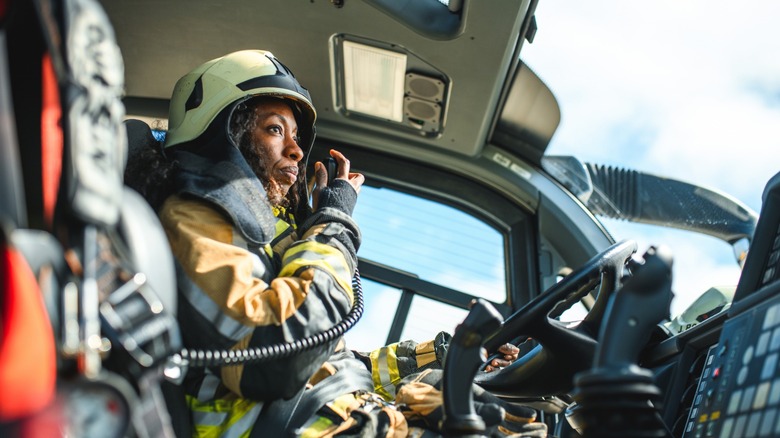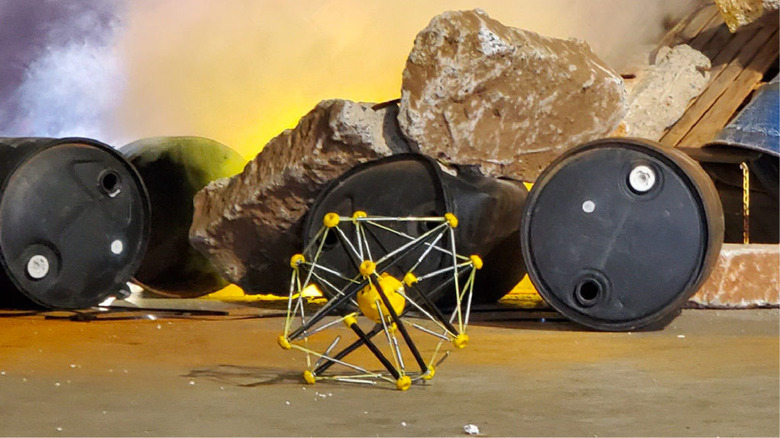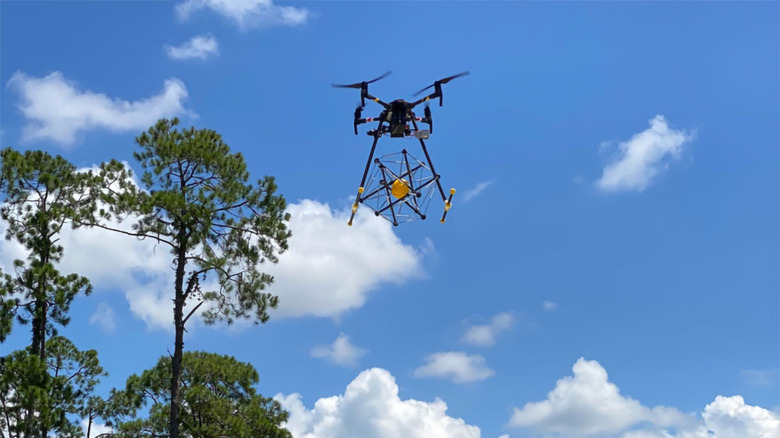Here's How Spherical Robots Are Helping First Responders Look For Gas Leaks
NASA and other space agencies work to develop technology that can be used in space for scientific discovery or human exploration. But that technology often finds uses far beyond its original intention and can be used right here on Earth. Historical examples of technology that came from space developments include kidney dialysis machines, freeze-dried foods, and modern firefighting equipment. Soon, this list could be joined by spherical robots used by first responders.
Scientists developed lightweight spherical robots with a skeletal-type structure for use on the Moon or Mars. The idea was that these robots could be deployed onto the surface of space environments and perform basic scientific experiments, allowing researchers to quickly collect data about the environment.
Then, they realized that the technology they were working on could be useful in a much wider range of scenarios, including on Earth, to collect data about situations that might be dangerous for people. They were thinking about situations like gas leaks where it's hard to see the danger, and a robot like this could help.
"We thought, wow, if we can do this on the Moon, we should be able to do it on planet Earth and save some lives," said Alice Agogino to NASA. Agogino is the director of the Berkeley Emergent Space Tensegrities Lab at the University of California at Berkeley. She and her team would eventually interview 300 first responders for more information about real-life emergencies on Earth.
Spherical robots have an innovative design
One of the special things about these robots from Squishy Robotics is the way they are constructed with the use of rods and elastic cables. This structure gives the robot its shape but also makes the robot more resistant to drops as impacts are spread throughout the structure instead of being focused just in one location. The approach to construction is called tensegrity, and has been used in architecture since the 1960s, including in domes and roofs. When applied to robots, it assists in a lightweight design but is still resilient to damage, which is important for spaceflight.
The idea is that these robots can pack down into a small space for transport, where every pound of weight and inch of space is valuable. Then, it can be deployed when it arrives at its destination and could be dropped from orbit while surviving the descent to the surface.
That would make landing them much easier to land than the complex landing process of the Mars Curiosity and Perseverance rovers, which had to be lowered on cables from a rocket-powered descent stage. Landing is one of the most difficult and dangerous parts of a Mars mission, so a robot with a lower risk during landing is desirable.
"With tensegrity robots, the robot itself is the landing device," said Terry Fong, the chief roboticist in NASA's Intelligent Robotics Group at Ames Research Center. "It could survive a fall from very high up and then keep going."
Spherical robots can be used in various emergency situations
The same properties that make the robots suitable for landing on Mars would make them suitable for dropping into dangerous emergency situations. They could be used to monitor scenarios that would be too dangerous for emergency responders to enter or instances where scientists wanted to gather research data but could not do so safely. That could include unstable environments like glaciers or a structure like a building that could be in danger of collapsing.
The robots are designed to be dropped from a height and survive, allowing them to be used as positioning instruments. Various robots dropped at different locations could give information about the stability of the immediate environment at their positions.
Other uses for first responders would be putting gas sensors inside the robots so they can identify what chemicals are present in an environment so that firefighters know what kinds of protective gear they need. They could also be used to monitor areas that are susceptible to wildfires.
"The early detection of wildfires is critical," Agogino said, "because so many of the wildfires that have become raging firestorms could have been prevented if they had been caught early when the fire started." Currently, the robots are only stationary, but the team is working on making mobile ones as well, which could help in other situations, such as bomb diffusing or monitoring electric lines.


